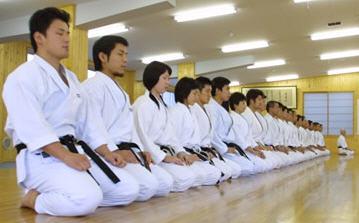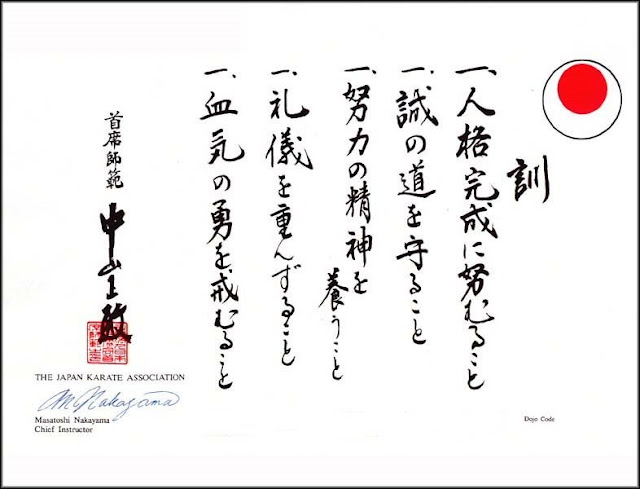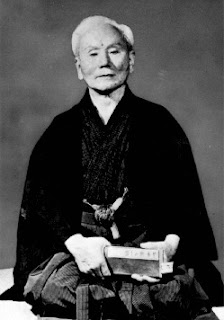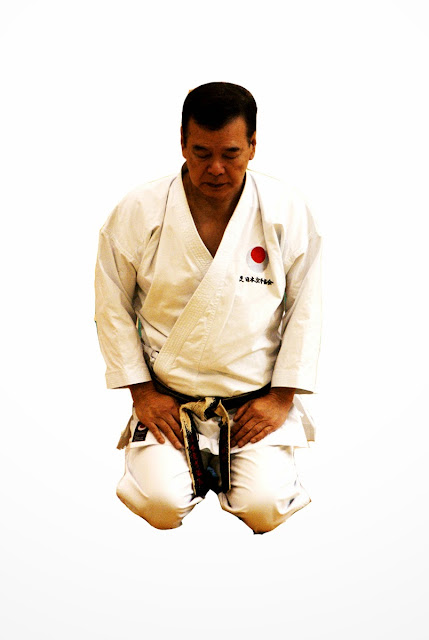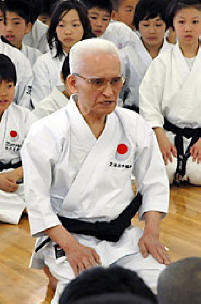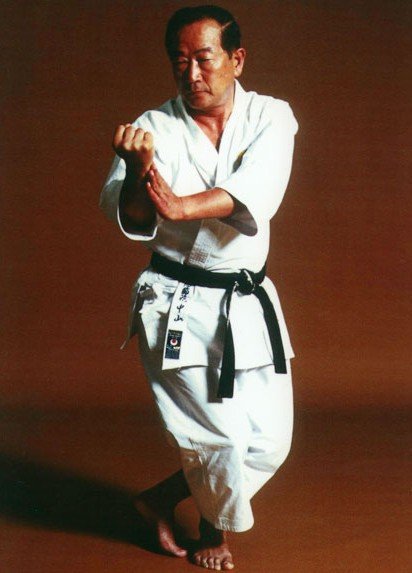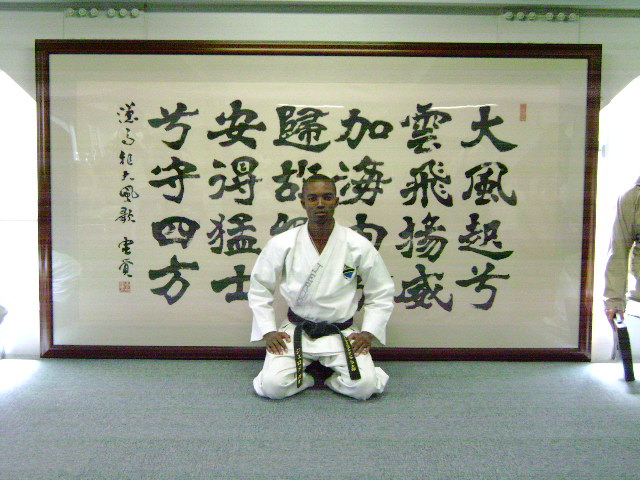
What is Karate-do ?
Apart from the formal introduction of karate and its history, to me karate –do is a way to “self realization “.
Through the practice of karate, we come to know what is good and bad for our karate, later what is good and bad for ourselves. With hard training and of course competitions too, we come to know how our body and mind responds to different given situations, and we try to make the best out of it, eventually we have to implement this hard earned knowledge in our daily lives.
I think that its not just enough to be good in karate only, we have to successfully inculcate karate principles in our “own world “ too, that is, our relationship with other members of our society, this when done successfully, a Karate-ka, can say that he UNDERSTANDS “ Karate-do “.
People, are different from one another, by size, shapes, mind, etc, thus making it more interesting to know and understand, what karate has to offer to oneself, one has to study karate long and hard enough to get what his body actually needs and deserves. We first learn basics. Once they are perfected, we learn, how to use them to overpower our opponents in ONE SINGLE TECHNIQUE. This is BUDO-KARATE.
Apart from the formal introduction of karate and its history, to me karate –do is a way to “self realization “.
Through the practice of karate, we come to know what is good and bad for our karate, later what is good and bad for ourselves. With hard training and of course competitions too, we come to know how our body and mind responds to different given situations, and we try to make the best out of it, eventually we have to implement this hard earned knowledge in our daily lives.
I think that its not just enough to be good in karate only, we have to successfully inculcate karate principles in our “own world “ too, that is, our relationship with other members of our society, this when done successfully, a Karate-ka, can say that he UNDERSTANDS “ Karate-do “.
People, are different from one another, by size, shapes, mind, etc, thus making it more interesting to know and understand, what karate has to offer to oneself, one has to study karate long and hard enough to get what his body actually needs and deserves. We first learn basics. Once they are perfected, we learn, how to use them to overpower our opponents in ONE SINGLE TECHNIQUE. This is BUDO-KARATE.
What is Karate sensei ?
A Karate
Sensei is different from a karate-instructor. A SENSEI has
responsibility towards his students, not just to develop his karate but
also his MIND, this is the objective of a karate-sensei, whereas an
KARATE-INSTRUCTOR, has to just instruct the students without any
awareness of any kind, least to say; with any responsibilities.
Most important for a karate sensei is to have a HEART for teaching. He has to understand and know what he has to offer to his students, also how much one particular student can receive from his teachings. It is on the part of a sensei, that he successfully inculcates the correct philosophy of karate in his students, instills discipline and emphasis on moral conduct, right from the very beginning.
Talking philosophy or explaining the finer points of karate, is not the only thing a “karate-sensei’ should be good at. He should be able to DO what he is trying to “ teach “ to his students. Thus talking plus doing karate together is what makes a KARATE-SENSEI.
Most important for a karate sensei is to have a HEART for teaching. He has to understand and know what he has to offer to his students, also how much one particular student can receive from his teachings. It is on the part of a sensei, that he successfully inculcates the correct philosophy of karate in his students, instills discipline and emphasis on moral conduct, right from the very beginning.
Talking philosophy or explaining the finer points of karate, is not the only thing a “karate-sensei’ should be good at. He should be able to DO what he is trying to “ teach “ to his students. Thus talking plus doing karate together is what makes a KARATE-SENSEI.
What is Karate-ka (student) ?
In my opinion, a “karate-student, has to understand what his teacher is trying to explain to him. It will not always be the case that the student will understand all that his sensei is teaching, but than karate is not that easy to be understood merely by words. A karate student has to learn these principles initially by his MIND and than by his BODY , that is he has to practice hard whilst keeping in mind what he has been taught in the dojo.
A karate-student has to be thinking always about “how can I go about my technique? “, “ how to make the best out of it? “, “how to make conditions favorable for me? “. This, I think should be the attitude of a karate-student, as well as a fighter.
Also a karate-student has to know whether his physical and mental conditions are good enough to receive hard and appropriate training, as for the simple fact that, in absence of both these prerequisites, it becomes very difficult if not impossible for the teacher to impart his knowledge to his students. Thus, a student has to prepare himself accordingly if he wants to pursue serious and life long karate training.
In my opinion, a “karate-student, has to understand what his teacher is trying to explain to him. It will not always be the case that the student will understand all that his sensei is teaching, but than karate is not that easy to be understood merely by words. A karate student has to learn these principles initially by his MIND and than by his BODY , that is he has to practice hard whilst keeping in mind what he has been taught in the dojo.
A karate-student has to be thinking always about “how can I go about my technique? “, “ how to make the best out of it? “, “how to make conditions favorable for me? “. This, I think should be the attitude of a karate-student, as well as a fighter.
Also a karate-student has to know whether his physical and mental conditions are good enough to receive hard and appropriate training, as for the simple fact that, in absence of both these prerequisites, it becomes very difficult if not impossible for the teacher to impart his knowledge to his students. Thus, a student has to prepare himself accordingly if he wants to pursue serious and life long karate training.

